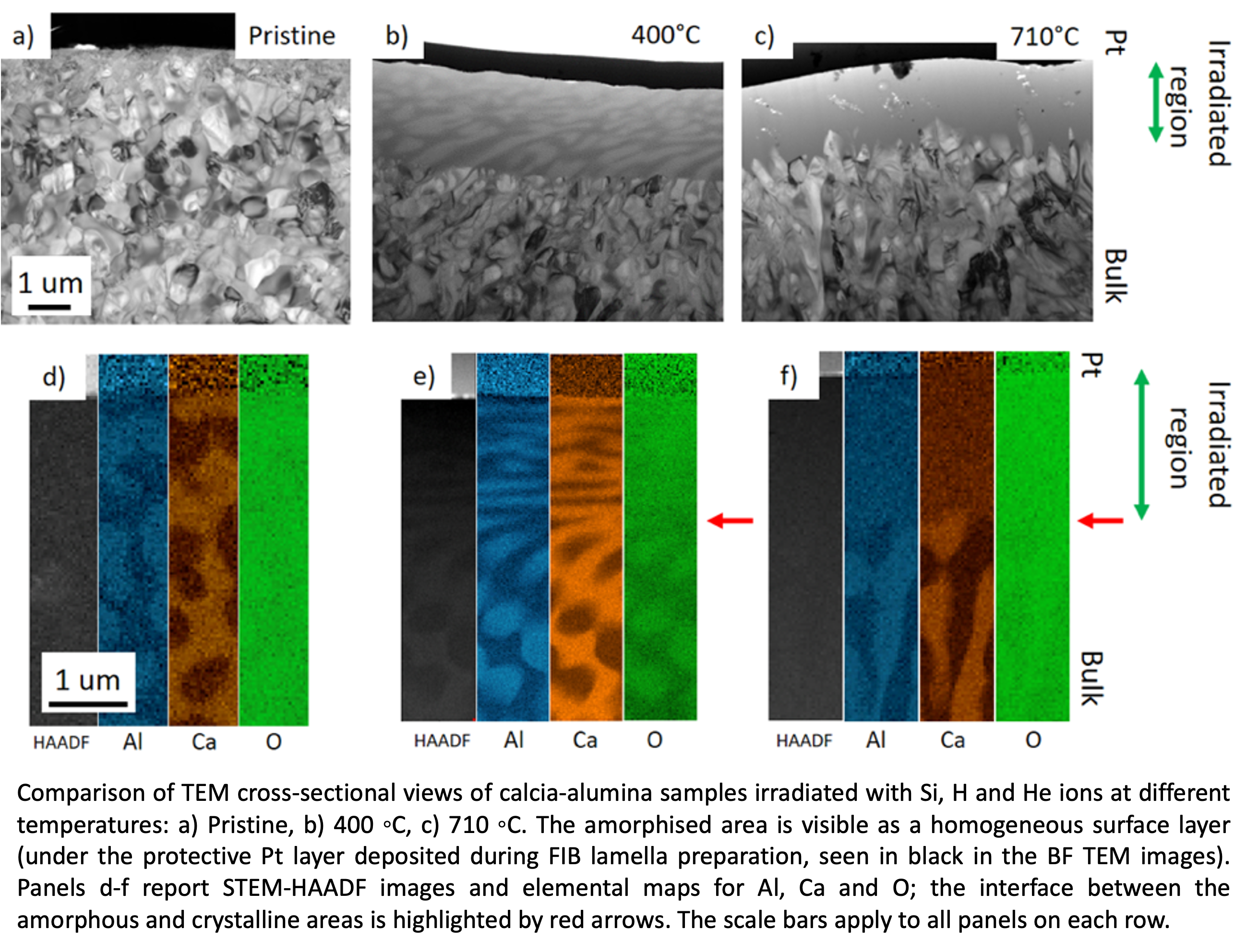Characterisation of glass-ceramic materials for nuclear fusion technology
- Abstract number
- 278
- Presentation Form
- Poster
- DOI
- 10.22443/rms.mmc2023.278
- Corresponding Email
- [email protected]
- Session
- Poster Session One
- Authors
- Miss May Ching Lai (2), Dr Giorgio Divitini (1), Professor Caterina Ducati (2)
- Affiliations
-
1. Istituto Italiano di Tecnologia
2. University of Cambridge
- Keywords
- Abstract text
The analysis of neutron irradiation damage in joining materials is crucial for their application in nuclear plants. Triple ion beam irradiation is, currently, the only way to emulate the displacement damage and the effects of transmutation products induced by high energy neutrons at elevated doses. This irradiation produces high levels of displacement per atom, and generates high concentrations of low solubility gases in the glass-ceramic microstructure. In this work, calcia-alumina glass-ceramics were investigated. The damage expected in the working conditions of a nuclear fusion plant was reproduced by simultaneous irradiation with Si, He and H ions at 400 °C, 615 °C and 710 °C, with fluences corresponding to 9 months-long working period in the DEMO nuclear fusion reactor first wall location. The main aim for the TEM analysis is to investigate the radiation damage and the nature of induced defects. In particular, the focus is on amorphisation and phase mixing of glass ceramic due to the displacement of atom induced by the Si beam and heating, the formation of bubbles/cavities due to the presence of He and H.
In this study we used focused ion beam-scanning electronic microscopy (FIB-SEM), transmission and scanning transmission electron microscopy (TEM and STEM) to investigate the crystallinity and changes of composition between irradiated and pristine areas. Electron diffraction patterns taken at increasing depth revealed the distance of amorphisation caused by the Si beam. The presence of distributed bubbles and cavities was observed in high-resolution TEM mode. Energy dispersive X-ray (EDX) spectrum images were processed using principal component analysis (in HyperSpy), and the elemental maps were extracted. The phases identified from EDX analysis were further confirmed through selected area diffraction.
Our results show that irradiation temperature plays a prominent role in determining recrystallisation, phase mixing as well as bubble density and aggregation in the irradiated specimens. This has helped to identify the type of defects to be expected in glass-ceramic materials at the working conditions for fusion technology.
- References
Journal of Nuclear Materials, Volume 567, 15 August 2022, 153783
https://doi.org/10.1016/j.jnucmat.2022.153783

